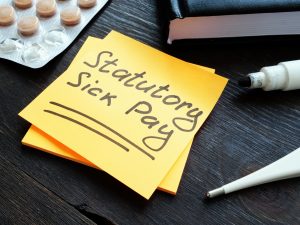Many sole-traders are likely to make a loss in the 2020-21 tax year due to the COVID-19 pandemic and associated recession. We set out below the various ways in which you can set off trading losses against income or capital gains
Early Trade Losses Relief
Losses incurred in your first four tax years as a sole trader can be carried back against your other income of the three tax years before the loss was incurred, using the income of the earliest year first. The loss can be set against total income of the earlier year.
Final Trade Loss Relief
Where a sole trader has a loss incurred in his or her final 12 months of trading, it can be carried back against the profits from the same trade. The set-off is against the tax year in which the cessation occurs and the three preceding years, taking the latest year first. This is often called terminal loss relief and, unlike opening years loss relief, the loss can only be offset against profits of the same trade of the earlier years.
Sideways Loss Relief
HM Revenue & Customs (HMRC) also calls this relief ‘Trade Loss Relief against general income’. You can carry the loss across and set it against your other income in the year of the loss. This would reduce the income tax you’d otherwise have to pay on other income
You can also carry the loss backwards. This means the loss can be deducted from your total income of the preceding tax year. This could give you a tax refund for the previous tax year.
No partial claims are permitted so it is not possible to restrict the loss relief to the taxable income only and retain the benefit of personal allowances, thereby increasing the losses available to set against income in other years. It is an all or nothing claim.
The claim is not mandatory and you can decide not to make it. This would be the case, for example, if the income is already covered by the personal allowance so there would be little point in making the claim.
Offset against Capital Gains
It there is no income to be allocated against the trading loss in the current tax year or the preceding tax year, then you can offset the loss against capital gains of the same tax year as the loss is recognised and the previous tax year.
• The gains can be from the disposal of any assets, not just business assets.
• Claiming the relief may waste the annual exemption for CGT, because the relief cannot be restricted to avoid this.
Carry-forward relief
If you suffer a trading loss, you can carry the loss forward. This means the loss will be deducted from profits that the business produces in future accounting periods.
This carry-forward relief may be less appealing to you as you have to wait for future profits of the business before you can benefit from loss relief. Also, this relief is more restrictive in that it only provides for the loss to be set against profits that the business produces – it doesn’t provide for relief against other sources of income or against capital gains.
Non-active trade loss restrictions
HMRC states that an individual carries on a trade in a non-active capacity during a tax year if the individual does not spend, on average, at least ten hours a week personally engaged in activities of the trade. Those activities must be carried out on a commercial basis and with a view to the realisation of profits as a result of those activities.
If these test are not met the amount of sideways loss is capped at £25,000
General restriction on income tax reliefs and losses
The total amount of certain income tax reliefs, including sole trade losses, that can be used to reduce total taxable income is limited to the higher of £50,000 or 25% of the taxpayer’s adjusted total income.
Summary
The table below provides a summary of the trading loss relief that a sole trader is entitled to claim.
| Type of relief | Time when loss occurred | Income/profits against which loss will be set | Relevant tax year |
| Early Trade Losses relief | Within first 4 tax years of trading | Any income | 3 tax years preceding loss, starting with earliest |
| Carry-across/back relief | Any accounting year of trading | Any income and chargeable gains | The tax year of the loss and the previous tax year |
| Carry-forward relief | Any accounting year of trading | Subsequent profits of the same trade | Any subsequent years until loss is absorbed |
| Terminal Carry-back relief | Final 12 months of trading | Profits of the same trade | The 3 tax years before the business ceased trading, starting with the latest |
SRC-Time are one of the South East’s leading accountancy firms in advising individuals and businesses in all aspects of their accounting and tax affairs and we are able to assist in any issue raised above.
Our expert team is available to provide you with advice and can be contacted on 01273 326 556 or you can drop us an email at info@src-time.co.uk or speak with an account manager to get any process started.

